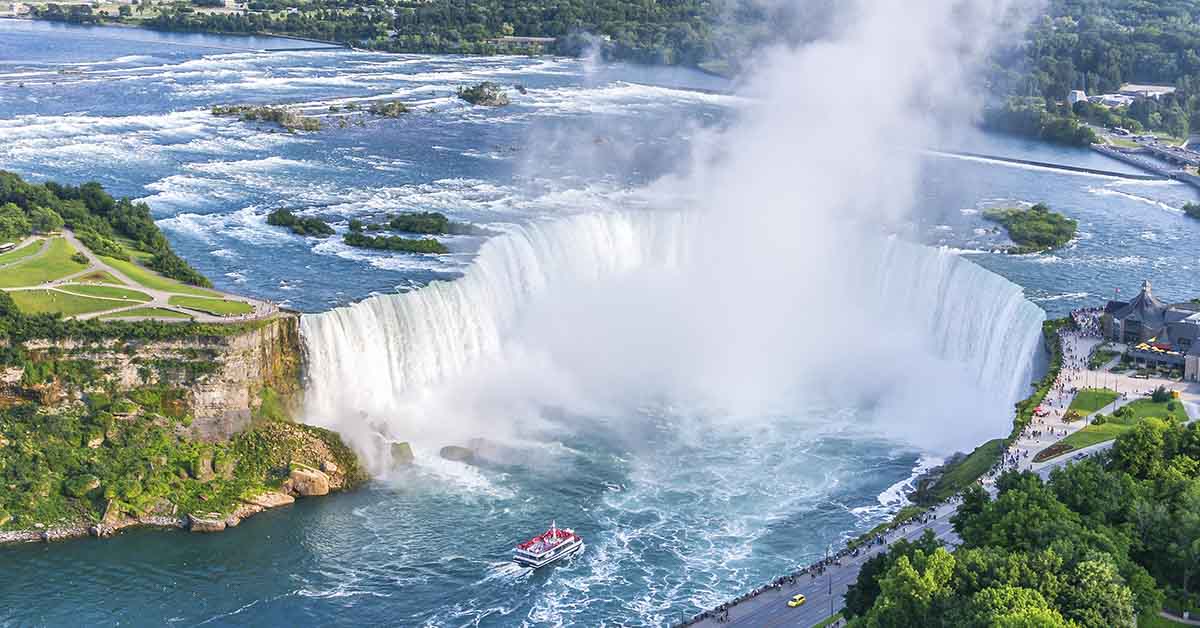Niagara Falls, made up of 3 cascades, is considered one of the wonders of the world. Thousands of visitors go each year to appreciate its beauty and magnitude. It is located in North America, between upper New York and Lower Ontario, Canada. Horseshoe falls, American Falls and Bridal Veil Falls are magnificent cascades to see, listen to, and take in.
In noting the magnitude felt by your senses, you’ll gain a new perspective on the immense power that radiates from these falls. In contrast, a lesser-known historical attraction is lying just below Horseshoe Falls, a huge tunnel buried beneath the powerful cascade. For the last several years it has been blocked off from the public but earlier this year that changed.
Establishing Power Companies
Adams Hydroelectric Power Plant was the first-ever plant to open in the U.S. and constructed the 2,189-foot tunnel. AHPP opened in 1895 and remained in business until 1961, working in tandem with two of Canada’s power companies, The Ontario Power Company and the Toronto Power Generating station. These ran from 1905-1999 and 1905-1974, respectively.

Innovators Harness Niagara Falls’ Power
The Niagara Falls tunnel and surrounding plants were the first of their kind. The water’s discharge point was at the base of the largest of the three cascades of Niagara Falls, Horseshoe Falls. The Canadian Power Company used Nikola Tesla’s patented Westinghouse generators to create alternating currents. By 1924, a total of 11 generators had been installed, although the plant started with only 2. “The tunnel held 71,000 gallons of water that moved at nine meters per second,” says Marcelo Gruosso, senior director of engineering and operations with the Niagara Parks Commission.

Hydropower Plant Operations
Marcelo further explains the process, “Beside every generator is a ‘governor’ which regulated the waterflow to a turbine. An air brake in the governor helped [to] adjust the flow. They needed 250 rpm exactly to give them 25 hertz. It took thousands of workers four years to excavate the shale beneath the main generating room using lanterns, dynamite, pickaxes and shovels. On its way down, the water would spin the turbine blades.” These blades were connected to a shaft that went up to the main floor to spin the rotor in the alternator. As a result, this generated AC power. In 2006, as part of a bigger project the Ontario Government deemed it a hazard to the environment. Their clean and green energy program included plan to shut down all coal-fired generating plants.
Executing a Plan to go Green
Plans were first discussed in 2017 and Marcelo and colleagues have been hard at work since. In July of 2022, their project came to fruition. They’ve reopened the tunnel and are offering tours of the Niagara Falls tunnel, to the public. Visitors can now tour both the plant and the tunnel together, included in the price of one ticket.
Guests can view a model scale of the engineering efforts required to convert the rushing waters into electricity, prior to even reaching the tunnel. Guests are, then, taken down about a third of a mile in a glass elevator. In that distance, they travel past 6 levels of infrastructure that once played an integral part of the generating process. At the bottom is the tunnel. When coming to the of the tunnel there is a viewing platform, which nearly extends to the base of Horseshoe Falls.

Niagara Fall’s Aesthetics
The roughly half a mile tunnel consists of four layers of brick. Furthermore, it is surrounded by 18 inches of concrete and covered by shale. Elena Zoric, a tour guide for the Niagara Falls attraction, explains “The plant was built during a time when aesthetics was high priority.” She says, Algernon S. Bell, a New York architect, designed a plan that would help the structure blend in with the falls. The historical attraction adds to the wonder and magnitude of Niagara Falls and all it has to offer.
Keep Reading: Derinkuyu: Mysterious underground city in Turkey found in man’s basement

